The Shrike-R kayak profiled in this issue is unusual among boats. It isn’t designed to go anywhere. It isn’t even meant to stay upright. As a rolling kayak, it’s made to be capsized, intentionally, and be rolled upright by the paddler. I’ve built two Greenland-style skin-on-frame rolling kayaks and the total distance I’ve covered in all the years I’ve paddled them would be measured in yards rather than miles. Their use could really only be measured in rotations. While my interest in rolling a kayak began as a way to recover from a capsize without having to bail out, rolling for the challenge and satisfaction of it began with meeting Maligiaq Padilla, Greenland’s leading national kayaking champion.
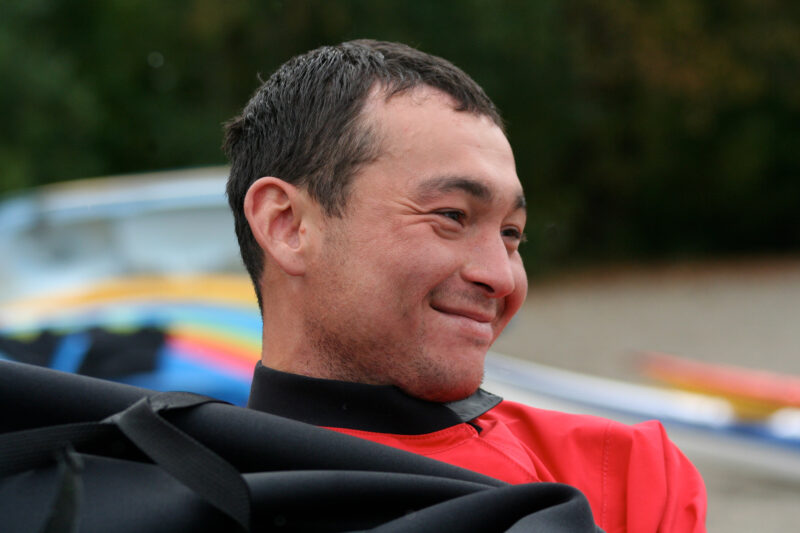 Photographs by and from the collection of the author
Photographs by and from the collection of the authorMaligiaq won the Greenland National Kayak Championship nine times with his first win coming when he was just 16.
Maligiaq was born in 1982 and grew up in Sisimiut, a town above the Arctic Circle on the west coast of Greenland. A great-grandfather on his mother’s side was a seal hunter who lost his life when a seal he had harpooned dragged him and his kayak so violently that his back was broken. Maligiaq’s grandfather, Peter Johnsen, was the last of the kayak hunters in Sisimiut, and kept to the old ways after the other hunters in the area took to outboard skiffs.
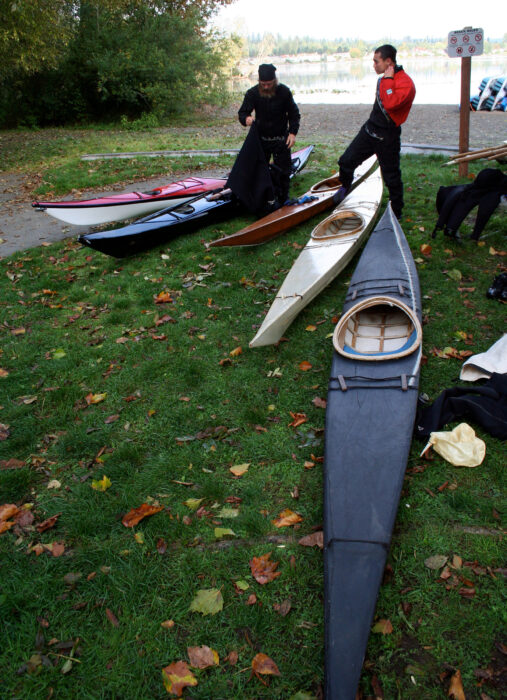
In 2008, Maligiaq took part in a Greenland-style kayaking event at Lake Sammamish in Washington. The black kayak in the foreground and the off-white kayak that Maligiaq is stepping over are the two rolling kayaks I built and brought to the event. To the right of Maligiaq are the harpoons I made and to the right of the black kayak is my fabric version of a sealskin float of the type used by Greenland hunters.
John Heath, who was Maligiaq’s host during his visit to the U.S. in the late 1990s, wrote: “When Maligiaq was a small boy, he was riding in a rowboat with his grandfather when his grandfather’s gun accidentally discharged. With his hand badly injured, Peter was unable to row the boat. Even though he was only four years old, Maligiaq managed to row the boat to shore. Maligiaq’s father says that ever since that incident, Maligiaq and Peter Johnsen have been ‘as close as two coats of paint.’”
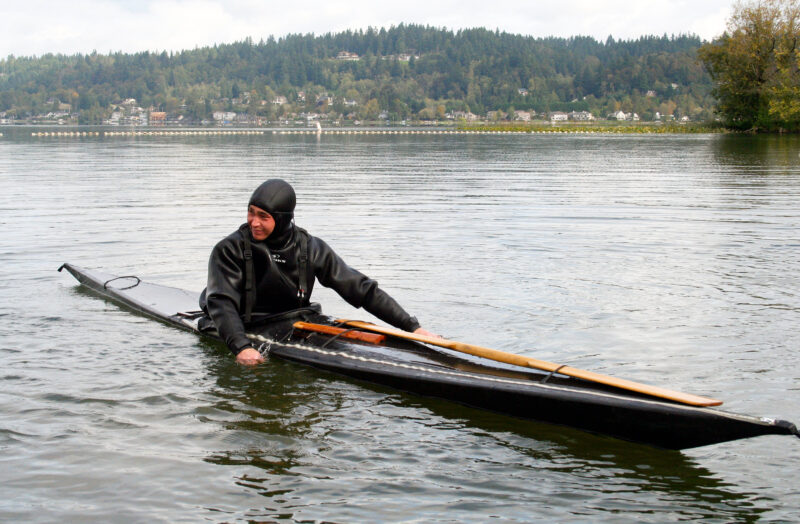
In 2008, for his demonstration on Washington’s Lake Sammamish, Maligiaq used my rolling kayak, paddle, and throwing stick. I’d made the kayak for travel, so the skin has a long zipper (the white stripe on the starboard bow) and the frame can be taken apart and packed into a ski bag and a duffel.
Peter taught Maligiaq about kayaking and how to hunt from one using a harpoon and a rifle. In 1994, Maligiaq learned to roll a kayak at the age of 12. The following year he entered the Greenland National Kayak Championship and won every event held for his age group. At the age of 15, he was teaching other teenagers in Sisimiut’s kayak club how to roll. In 1998, he competed with the adults in the national championship and as a 16-year-old was the youngest-ever winner. He went on to defend his title as champion eight times in the years that followed.
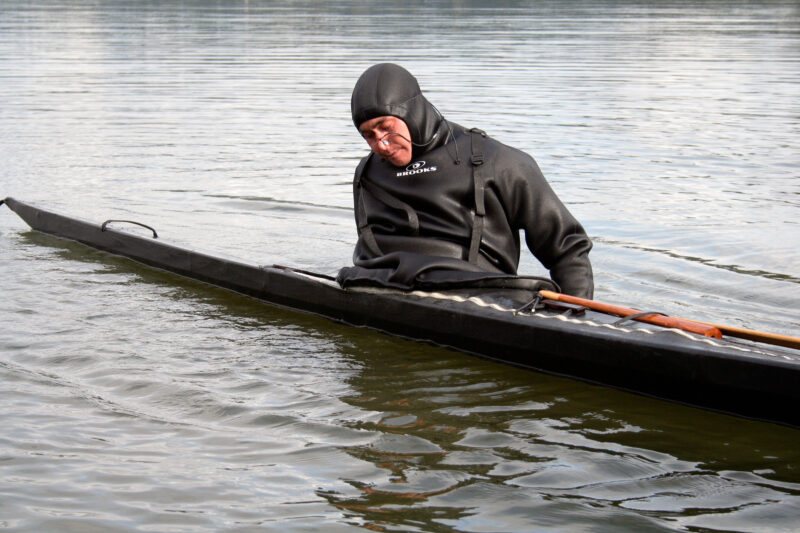
With the paddle and throwing stick tucked under the deck lines, Maligiaq is setting up to fall backward and roll up with just his hands.
Also in 1998, Maligiaq was invited to Maryland to be a special guest at the Delmarva Paddler’s Retreat, an annual event for North American devotees of the Greenland-style kayak. He brought with him his sealskin-covered kayak as well as his tuiliq—a sealskin paddling jacket. The kayak had been damaged in transit, and while he was able to use it for his demonstrations, it was hooked to one side and couldn’t hold a straight course. Maligiaq spoke very little English at the time, but he had a friend, John Heath, at the retreat who took him under his wing. John, a well-respected authority on traditional kayaks, had met Maligiaq in 1995 on one of his research trips to Greenland. After Delmarva, John drove Maligiaq to his home in Houston, where he stayed with John and his wife, Jessie. At the Southwest Canoe Rendezvous in Huntsville, Texas, Maligiaq demonstrated kayak rolling, with John providing narration.
The two events filled up the week or so that Maligiaq had planned to stay in the U.S., but after the Rendezvous he asked John if he could stay in Houston with him. John agreed and the short visit stretched out to 13 months. John and Maligiaq took road trips to both coasts, visiting kayaking clubs all along the way. During his time in Houston, Maligiaq built a new kayak in the Heaths’ garage.
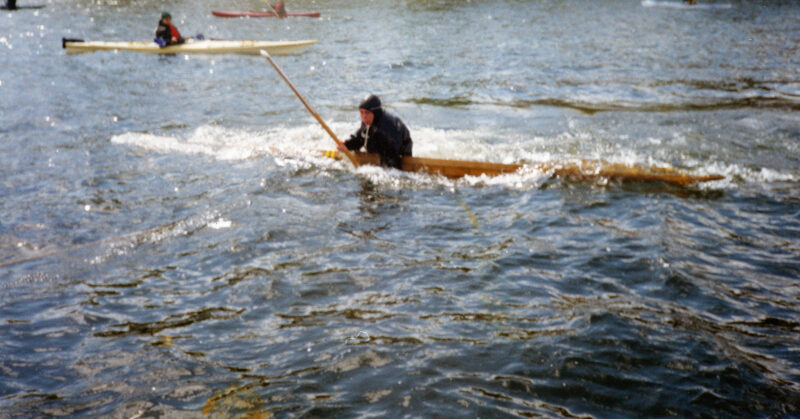
The Walrus Pull involves securing a rope to the deck lines and leading it under the kayak. The other end of the line has a half-dozen people pulling hard and fast on shore. Here Maligiaq is keeping the kayak from flipping backward and driving him underwater. While this technique is part of the Greenland rolling competition, it was a matter of survival for hunters. It is the very circumstance that took the life of Maligiaq’s great-grandfather.
I was working in Seattle as the editor of Sea Kayaker magazine when John called me. I had struck up a friendship with John in the early 1980s after his son David found me at a 10-day boat show building a two-hole baidarka, which John had documented in 1962 and published in Bark Canoes and Skin Boats of North America. David recognized the frame, put me in touch with his father, and John and I stayed in touch until his passing in 2003. John wanted me to meet Maligiaq and we agreed on a rendezvous at a small lake east of Seattle.
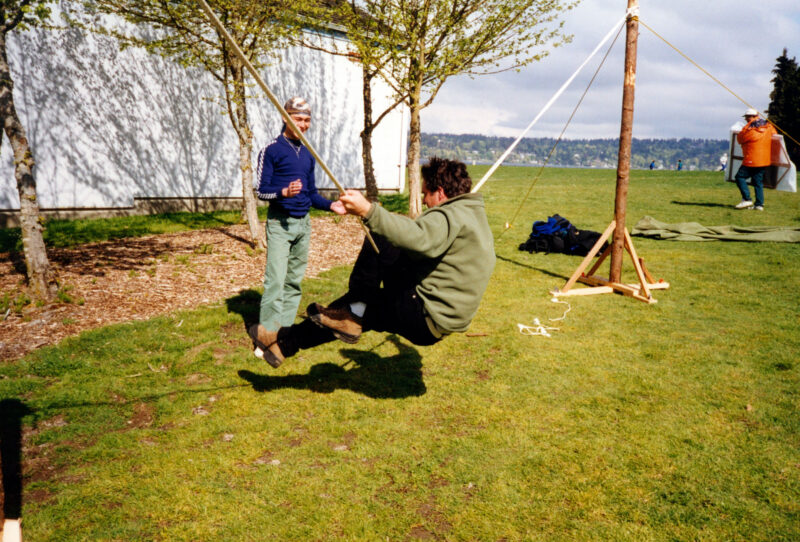
Allunaariaqattaarneq or Qajaasaarneq are rope gymnastics that are included in the Greenland National Kayak Championships. The dozens of maneuvers were developed to provide strength and agility training for kayakers. Here Maligiaq is coaching me through flipping backward around the ropes. Maligiaq showed me another exercise where he sat on the ropes, as if on a swing, and made a full horizontal 360-degree turn without using his hands, lifting one leg after another over the ropes on each side. I tried it and managed to get turned around without falling off. Maligiaq said I was the first person he’d seen outside of Greenland who could do the exercise.
Maligiaq had a cold, but even though he wasn’t feeling well he did his rolling demonstration, with John narrating, seamlessly transitioning from one technique to the next. Each roll was more challenging as he held the paddle in increasingly awkward ways and eventually did rolls without it, using only his hands and then with one hand held against his chest. It was an impressive performance that left a deep impression on me not only for his skills but also how generous he was with his time and willingness to perform for an audience of one while he was not feeling well.
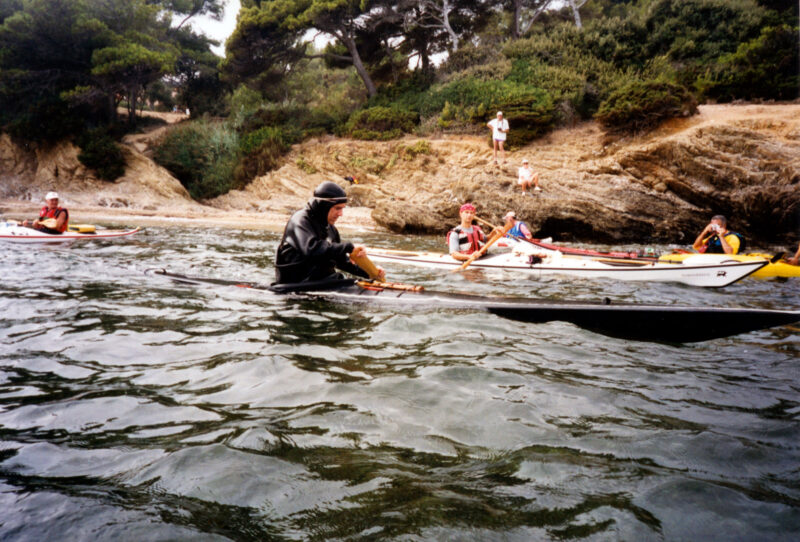
After meeting Maligiaq, I practiced Greenland rolling techniques and began doing my own rolling demonstrations at sea kayak symposiums. When I was invited to the Mediterranean coast of France to demonstrate Greenland kayak construction and rolling techniques, the attendees helped me assemble my take-apart rolling kayak by installing the pegs and lashings. After the canvas skin was slipped over the frame and zipped closed, I did my repertoire of rolls. The kayak sits very low in the water with the aft deck nearly awash, which makes difficult techniques like hand rolling easier.
Maligiaq’s English was still moving toward fluency at that time, and I had the impression that he was also rather shy, so I didn’t pepper him with questions as much as I would have liked and those that I did ask were often answered by John on Maligiaq’s behalf. Maligiaq did have a quick answer when I asked if he’d found any American food he liked: “beef jerky.” It reminded him of dried seal meat.
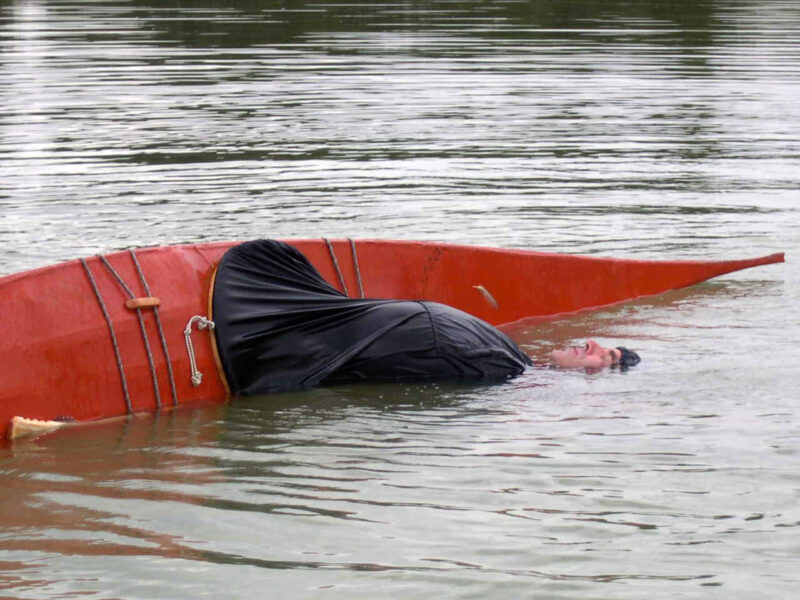
The balance brace is not a skill tested in the Greenland championship but it was one Maligiaq showed me and after I learned how to do it I demonstrated it here in a borrowed kayak in Brittany. The position is a good way to be stable and relaxed in that point halfway between capsized and upright. Manasse Matheussen, a Greenland hunter and the winner of the 1949 World Kayaking Championship in Denmark, could even sleep in this position. He wouldn’t go hunting with anyone who couldn’t do this on lengthy days of paddling.
After seeing what Maligiaq could do with a kayak, I came to appreciate rolling as more than a means of recovering from a capsize. I’d built a handful of Greenland kayaks as seagoing vessels but I was intrigued by all the variations and the gymnastics rolling required. I built two new kayaks for rolling, making them shallower and narrower until the second one floated me with the aft deck a fraction of an inch above water level. The difference that made for rolling, especially lay-back rolls, was a game changer. Instead of my putting a lot of effort into raising myself up onto the deck, the stern of the kayak sank and scooped me up.
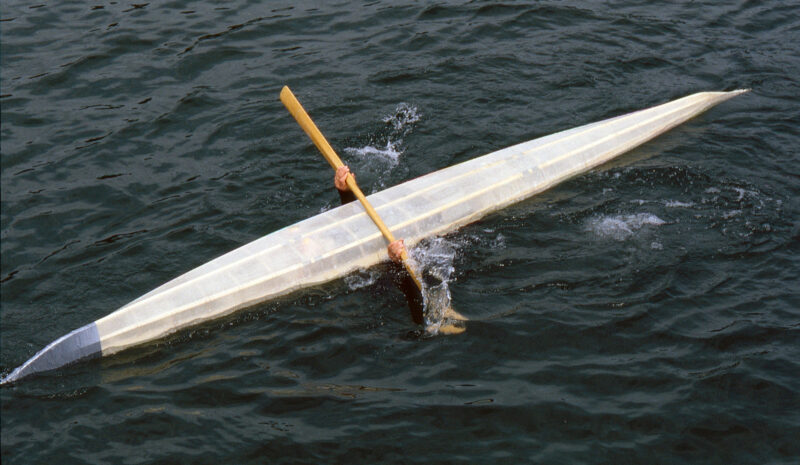
One of the Greenland championship skills I practiced after meeting Maligiaq is paddling upside down. In competition, points are awarded for the number of meters traveled this way.
I never got anywhere near Maligiaq’s level of skill. He could do a straitjacket roll with his arms crossed over his chest. I peaked at rolls that were several lesser degrees of difficulty. The only thing I could do better than Maligiaq was make a bigger splash when I capsized.
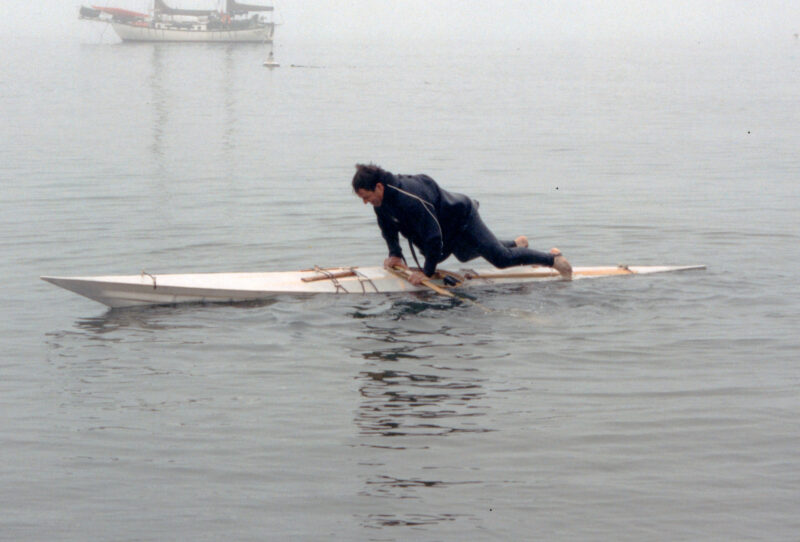
Whenever I came to the end of a rolling demonstration, I would tell the audience that I would conclude with the trick Maligiaq used to finish his demonstrations. After I slipped out of the cockpit I would pay my tribute to him by doing pushups on deck.
Maligiaq visited the Seattle area again in 2008 and 2009 for a Greenland-style kayaking event. As a young man in his mid-20s he no longer seemed shy and had a ready smile and excellent English. In the years since I had last seen him, he had been promoting not only the Greenland kayak arts but also Alaska’s traditional kayaking. Generations of native Alaskans had grown up and lived without the kayaks that had sustained their ancestors for millennia. Maligiaq sought out the elders and brought their knowledge back from the brink with youth classes in 33 schools around the state. Students built more than 200 kayaks in those classes.
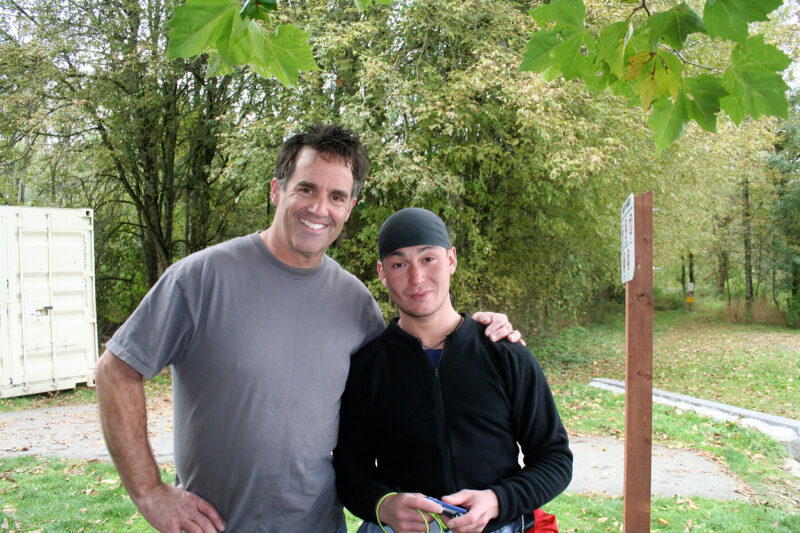
During the 2008 event, I asked Maligiaq to have a picture taken with me. He agreed, but only after saying “You’re too tall.” His name means “medium-sized wave” in Greenlandic.
After 10 years in Alaska, Maligiaq—married and the father of a son and a daughter—returned to Greenland in 2020 where he continues to pass on his knowledge of traditional kayaks. One American paddling magazine acknowledged Maligiaq as “perhaps the greatest sea kayaker in the world.” A fellow Greenlander says in his homeland Maligiaq is regarded as an inuktialak, a great human being.![]()


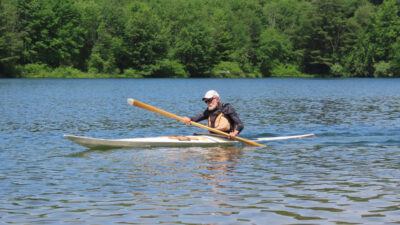
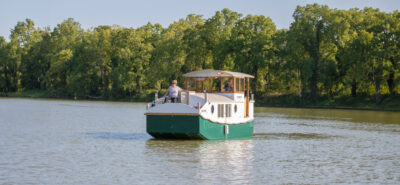
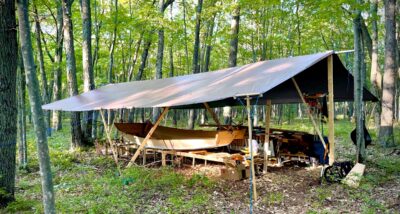
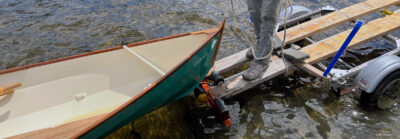
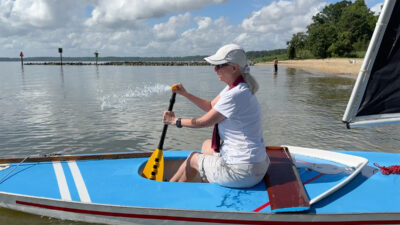
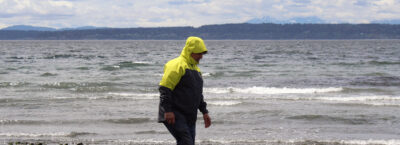
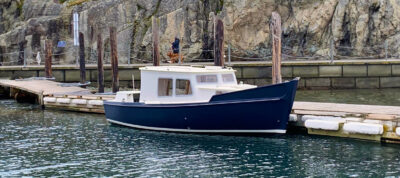
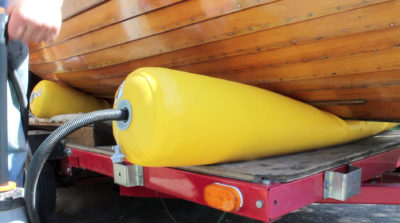
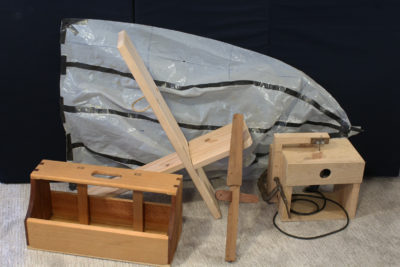

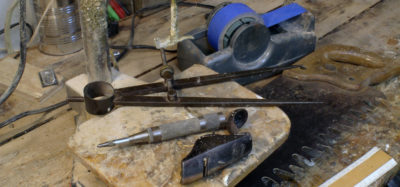
So wonderful that he shares his skill and passion.
Impressive skills by both Chris and Maligiaq. It is obvious to any small boater how these techniques would increase one’s bonding with their boat and build confidence.
But I’m confused by one thing. While the use of a very low deck kayak while rolling is an obvious advantage, are the same sort of boat used when hunting? Due to their inherent instability, I would guess not. If this is so, then at what point would one’s larger/deeper kayak become un-rollable? I guess I’m asking for an explanation how the competition techniques can be actually used in practice.
Kayaks used in the Greenland rolling championship are required to have at least 1.5 cm (not quite 5/8”) freeboard. That rule was added after a competition in which kayaks with even less freeboard appeared to have an unfair advantage. I don’t think the traditional hunting kayaks had much more freeboard than that. In his book Eskimo Life, published in 1896, Norwegian Arctic explorer offered the dimensions of Greenland kayaks:
“A kaiak for a Greenlander of average size measures, in the neighbourhood of Godthaab, about 6 yards (5½ metres) in length. The greatest breadth of deck, in front of the kaiak-ring, is about 18 inches ((45 centimetres), or a little more; but the boat narrows considerably towards the bottom. The depth of the kaiak from deck to bottom is generally from 5 to 6½ inches (12 to 15 centimetres), but in front of the kaiak-ring it is an inch or two more, in order to give room for the thighs, and to enable the rower to get more easily into his place.”
My black take-apart rolling kayak has a depth of 6 ¾”. I built it to fit me and I’m taller and heavier than Maligiaq and likely Nansen’s “Greenlander of average size.” If I’d scaled that rolling kayak to fit Maligiaq, it would have come in well within the depth Nansen reported for hunting kayaks. I suspect that rolling kayaks used in competition now are not that much smaller than hunting kayaks would be.
Great inspirational article. Always was fascinated with Maligiaq and his very first video with your narration (?) where he paddles on two chairs and does lots of rolls – it’s my favorite of all times. I come back to it all the time.
Question to you: how do you get on top of the kayak to do the push ups?
Good question. The pushups are easy and the hard part is getting out of the cockpit. The small cockpit opening and low foredeck of my rolling kayak make a tight fit and I have to scoot out a bit at a time getting each kneecap under the masik and working my heels over a few frames. I can’t stretch back over the aft deck as I would at a beach because the stern would submerge, and the water is prone to pour over the coaming and swamp the kayak. I keep my head and upper body as far forward as possible. I brace by pressing one blade of the paddle on the aft deck behind me with the other blade partially submerged to resist a roll in either direction. Once my kneecaps clear the coaming, I can lift my legs out and straddle the kayak. From there I lean forward, get the paddle out from under me and bring it around in front. While my legs are in the water, I’m stable. I press the paddle on the foredeck, with the outboard blade partially submerged again, and put my feet on the after deck, ready for pushups.
I met and learned much from Maligiaq at the Delmarva paddling retreat at Camp Arrowhead, DE, in 1998 and 1999. Between the time on the water paddling and on land learning the rope moves, the weekends passed far too quickly but we all learned so much from him. He inspired all of us with his abilities.
I had the job of picking up the above-mentioned damaged kayak in Ottawa and delivering it to him. I had to make a splint to protect it for the road trip from upstate NY to Lewes. The kayak was well studied by the participants of the weekend.